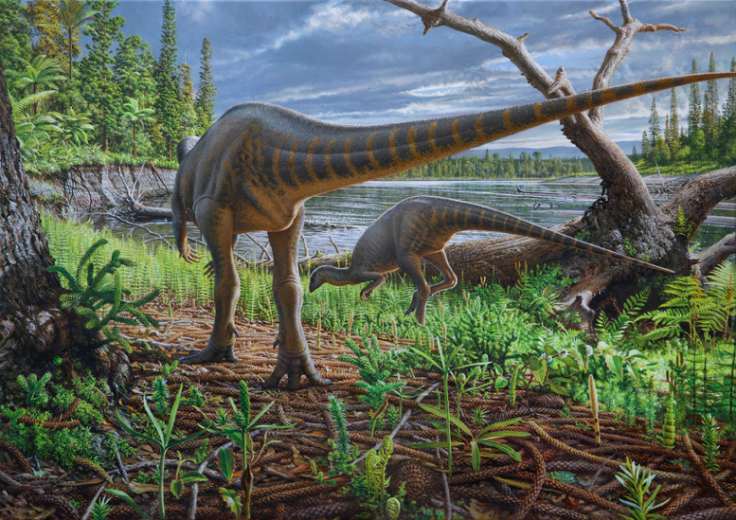Turkey-Sized Dinosaur Diluvicursor Pickeringi Lived 113 Million Years Ago, Found In Australia

It was the size of a turkey and walked on two feet, and it belonged to the family of herbivorous dinosaurs called ornithopods. Diluvicursor pickeringi lived 113 million years ago in the great rift valley that existed at the time between present-day Australia and Antarctica, but its existence was announced Thursday.
D. pickeringi, whose name means "Pickering’s Flood-Running Dinosaur," is described in a paper published Thursday.
"Diluvicursor shows for the first time that there were at least two distinct body-types among closely related ornithopods in this part of Australia. One was lightly built with an extraordinarily long tail, while the other, Diluvicursor, was more solidly built, with a far shorter tail. Our preliminary reconstruction of the tail musculature of Diluvicursor suggests this dinosaur was a good runner, with powerful leg retracting muscle," Matt Herne from the University of Queensland, Australia, who was lead author of the paper, said in a statement Thursday.
Herne added that the relationship between the dinosaur’s anatomy and its environment, and how that affected what it ate, how it moved and where it spent its time are all prospects for future research.
Fossilized remains of a partial skeleton of D. pickeringi were found in 2005, at a place called Eric the Red West, in southern Australia. Located along the coast, the place has wave-cut rock platforms which are actually from the sedimentary basins that formed where the great rift once used to be. The fossils were discovered in one such rock platform by George Caspar, a volunteer prospector.
The site in the Victoria state of Australia is also important for the information it provides about the larger ecosystem of the ancient rift valley. The vertebrate fossil remains found here were buried in deep abrasions at the bottom of a fast-flowing river, along with other wooden detritus transported there by floodwaters.
"The carcass of the Diluvicursor pickeringi holotype appears to have become entangled in a log-jam at the bottom of this river. The sizes of some of the logs in the deposit and the abundance of wood suggest the river traversed a well-forested floodplain. The logs preserved at the site are likely to represent conifer forests of trees within families still seen in Australia today," Herne explained.
And given the amount of fossil material found at the site, it will be no surprise if it yields another dinosaur species or two that is not yet known to science.
Like Herne said: "Much of the fossil vertebrate material from Eric the Red West has yet to be described, so further dinosaurs and other exciting animals from this site are now anticipated."
Titled "A new small-bodied ornithopod (Dinosauria, Ornithischia) from a deep, high-energy Early Cretaceous river of the Australian–Antarctic rift system," the open-access paper appeared online in the journal PeerJ.
© Copyright IBTimes 2025. All rights reserved.





















